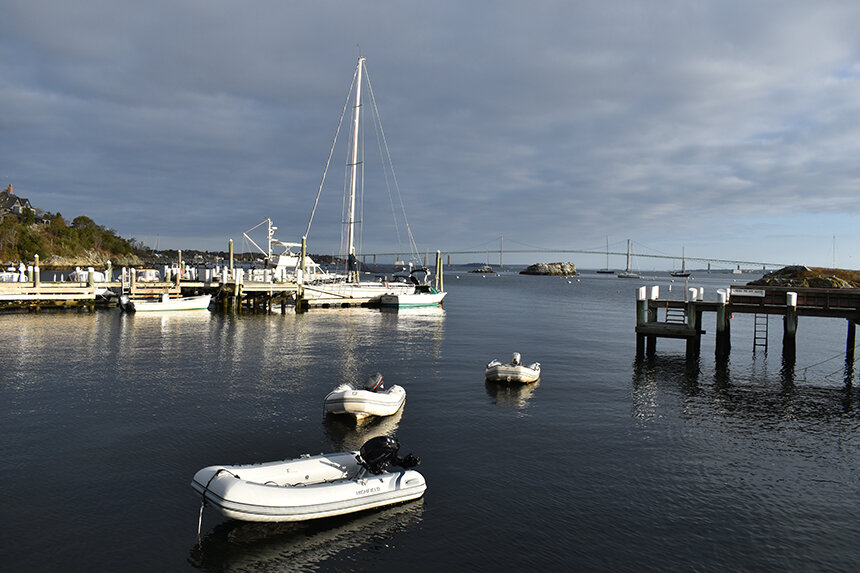Compromise Reached for Building Near R.I. Wetlands
March 29, 2015
PROVIDENCE — A new statewide standard for building near wetlands has support from the construction industry and from environmentalists. But if approved, the zoning change would allow construction closer to wetlands in six Rhode Island communities and shift much of the jurisdiction over granting exemptions to the state.
The proposed distance for building near wetlands, known as a setback, is 100 feet from lakes and ponds and 200 feet from rivers, streams and reservoirs. A 50-foot no-build zone is currently the default state benchmark, but 24 communities have different buffer standards. Barrington, Burrillville, Charlestown, Middletown, North Smithfield and Tiverton have setbacks of up to 200 feet for some of their wetlands.
Coastal wetland permits would still be managed by the Coastal Resources Management Council (CRMC), which typically requires a 200-foot setback.
Supporters of the new standards and the legislation to make it state law, say the tradeoffs are worth the end result. The construction industry likes having universal setback standards and one place, the Department of Environmental Management (DEM), to file paperwork and seek exemptions.
Environmentalists and municipal planners like that new water sources, such as streams, vernal pools and areas near floodplains, would be added to the list of designated wetlands. Cities and towns could also expand setbacks from the 100-foot buffer designation at specific sites per DEM approval.
“It increases protection and eliminates a municipal level of the permitting process,” Janet Coit, DEM director, said during a March 25 Senate Committee on the Environment and Agriculture hearing.
The legislation comes after five years of failed efforts by the Rhode Island Builders Association (RIBA) to establish universal setback standards and speed up permitting. Environmentalists and some municipal planners opposed the changes, fearing they would lead to the loss of open space, threaten water quality and damage vital ecosystems.
However, with the support of builders and planners, but opposed by environmental groups, the “dry-lands bill” passed in 2013, creating a study commission to develop changes to the standards. A yearlong series of negotiations between representatives from the construction industry, biologists, civil engineers, state environmental agencies and municipalities led to several reports and culminated with the proposed changes to buffers.
Tom Kutcher of Save The Bay served as a wetlands scientist on the task force. He said the gold standard for wetlands buffers is about 500 feet, but noted that they vary based on location. The task force issued a report on the importance of wetland buffers for pollution filtration, flood control and habitat protection.
Kutcher testified that the proposed legislation improves protection over the status quo.
“What’s in the bill falls short of full wetlands protection. It falls short of what the science says what should protect wetlands,” he said. “But we recognize that there is a compromise between entire wetlands protection and having something we could come to a consensus on.”
Paul Roselli, of the Burrillville Land Trust, the state Land Trust Alliance and the Blackstone River Watershed Council, praised the new setback rules for its reliance on science. “Because of that one word, that made all the difference in getting this bill done,” he said.
Roselli, however, wants all of the new buffer zone expanded to 200 feet, as well as more community involvement in determining wetland locations and granting exemptions.
Other changes are expected to the bill, such as input from water supply boards, a group that felt it was excluded from the legislative process. Coit also said DEM would need funding for five full-time employees to meet the added workload.
During the recent Senate hearing, construction advocates said several times that “outliers” such as communities and conservation groups have prevented building permits with arbitrary rules and a general resistance to development.
“This type of scenario has contributed to the lost decade … that has plagued our economy for years, if not decades,” said Timothy Stasiunas of RIBA.
Stasiunas said it currently takes five years to get a subdivision built in Rhode Island. The new standards would allow the construction industry to lead the state out of recession, he said.
Builder and RIBA representative Robert Baldwin said regulatory approval can sometimes take twice as long as it does to build a new house.
“Regretfully, in certain areas, there are outliers that have utilized certain setbacks and buffers at will. The outliers have literally taken certain parts of them and made them unbuildable completely.”
Business advocate Gary Ezofski was one of the key drivers behind the task force and the creation of a universal buffer. He said the existing 200-foot setbacks are typically challenged by builders and construction permits are eventually granted by municipal boards.
“They never hold. Variances are given. And all that happens is that we increase the timeline to get to a permit. And that’s not what it should be,” he said.
Eugenia Marks of the Audubon Society of Rhode Island offered tepid backing for the legislation. “This is a compromise bill. It doesn’t fully protect, but it’s a compromise and Audubon supports it,” she said.
The bill was held for further study. A House version of the bill is expected to have a hearing.
Categories
Join the Discussion
View CommentsYour support keeps our reporters on the environmental beat.
Reader support is at the core of our nonprofit news model. Together, we can keep the environment in the headlines.
We use cookies to improve your experience and deliver personalized content. View Cookie Settings



